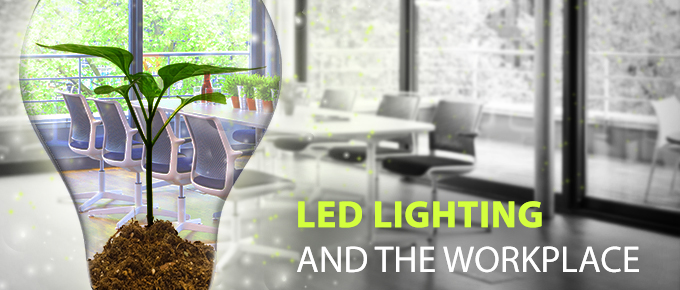When marketing a position to prospective employees, most employers tend to focus on highlighting benefits such as good pay, vacation days, job security, and such. Focusing on these common areas of interests indicates most employees haven’t yet realised that the present day employee is looking for more than just a satisfactory pay check.

Due to the amount of information now available to individuals concerning how their work life can affect their health, most employees are now looking for jobs whose setting and tasks can promote a healthy lifestyle. And one of the easiest ways an employer can ensure a healthy work environment is through lighting.
Proper lighting in the workplace isn’t just about providing enough light for employees to see by. The benefits of proper lighting are more expansive than that and below are listed just a few of those extra benefits.
1.Good workplace lighting improves the mood of workers: Studies have shown that the right amount of lighting can contribute a lot to improving the mood of employees, and a cheerful employee is a productive employee.
Poor artificial lighting can bring about depression by causing a decline in the brain’s production of serotonin – a hormone that induces happiness. So by having a workplace properly lit by either natural light or good LED lighting, you can convince prospective employees that every day on the job will feel like, “walking on sunshine…”
2. Good lighting positively influences decision making: Because the lighting efficiency of the workplace can influence the mood of employees, it can also influence their decision making process. Employees that aren’t strained by the effects of poor lighting are less prone to make poor and potentially hazardous decisions.
3. Good lighting promotes a healthy work environment: A workplace, such as an industrial setting, needs to be well lit in order for employees to clearly see what they’re doing and avoid harmful obstacles that may be in their way.
Not only does proper lighting help an employee steer clear of danger, it also helps maintain the health of an employee’s eyes. Too harsh or too dim lighting places strain on the eyes and can lead to headaches, lethargy and even irreversible damage. No prospective employee would like to work in such an environment. To properly promote your workplace as a desirable place to work, its lighting, be it natural or LED, must be within a suitable range.
4. Good workplace lighting improves concentration and productivity: A studypublished in journal Optics Expressshows that proper lighting actually helps students perform and learn better in classrooms. Students placed under good LED lighting outshined students who were situated in a classroom lit by standard fluorescents.
The results of this study are equally applicable in the workplace because lighting also influences an adult’s brain stimulation. With proper workplace lighting, an employee’s mind is at ease and is more capable of focusing on the task at hand, thus resulting in higher productivity. And just like the students in class, proper lighting in the workplace also facilitates on the job training.
While certain studies have suggested that natural lighting is best for commercial environments, it is impractical because the availability of natural light is dependent on weather and time of day. Thus, lighting experts recommend LED lights as the best option for 24/7 lighting in the workplace. Quality LED lighting in an industrial or commercial setting will present a more attractive workplace to prospective employees and will ensure an employer has met lighting safety standards.
To get the best results out of LED lighting in your workplace, you simply need to follow these steps:
1. Dim overhead lights: Of course this doesn’t apply to your workplace if your lighting is already within the range recommended by OSHA. Among other important things, OSHA suggests that commercial environments should be arranged in a manner that reduces glare and excessive lighting that may lead to headaches and eye strain.
2. Lighting should be flexible: Because different tasks require different levels of lighting, do not take a blanket approach to lighting your workplace. The amount of lighting needed in the administrative department dealing with documents is different from the amount of lighting needed on a manufacturing line. Thus, allow for variable lighting.
An added advantage of variable lighting is you save on lighting costs by not over-lighting inactive areas that require little or no lighting.
3. Use natural light when possible: While natural light might not be available 24/7 and all year round, you should still make use of it when possible. Not only is it healthier for your employees, it saves you lighting costs and improves the mood of the workplace.
With all these in place, your place of work becomes more attractive than the average work location and makes you a more attractive employee than your competitors.







